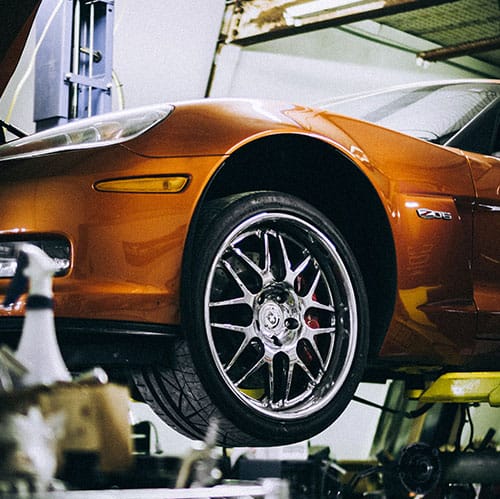Brake Caliper Replacement and Service at
Your Home or Office
Average Cost Of Labour for Brake Caliper Replacement Service
Labour is calculated by Multiplying the length of time it will take to do the repairs by the Hourly Rate

What is Brake Caliper Replacement Service?
Front and rear disk brakes are often present in most cars. The brake caliper is a key component of the braking system. When pressed, the brake pedal ensures that fluid from the master cylinder flows to the calipers. The brake fluid applies pressure on the caliper piston. This pushes the brake pads against the rotors and results in stopping or slowing your car.
There can be 2 or 4 calipers in a car. Cars have four calipers when each of the four tires has a rotor. Where two rotors and two drums are present, only two frontal calipers will be provided. Brake calipers can also rust, and as contamination increases, leakage of the fluid will occur.
The braking system also generates heat that becomes absorbed by the calipers; this eventually undermines the seals inside the calipers. It is therefore necessary to replace the brake caliper when problems are detected in the braking system
Note:
As brake calipers work in synergy with the pads, you may be required to change the brake pads when replacing the brake calipers.

Consider Replacing The Brake Calipers When:
-
Brakes generate unusual squealing noise
-
The car pulls hard left or right when braking
-
Applying the brake pedals becomes unusually easy
-
Brake fluid leaks are detected

Why Is Brake Caliper Replacement Service Important For Your Car
Servicing your car brakes regularly ensures potential safety risks are addressed promptly. Ignoring maintenance checks and repairs can be temporarily convenient, but this often results in bigger and more expensive repairs in the long run.
Recommendation:
Follow the manufacturer’s brake service schedule
Don’t drive your car when the pads or rotors wear thin to prevent damaging the calipers
Brake fluid should be changed frequently. After every 30,000 miles is recommended.
Promptly inspect the braking system when clear fluid trickles from the tires or the brake pedals feel soft.

How it Works

Get A Quote

Book an Appointment

Get Your Car Fixed
Google Reviews
Our Mechanics Are Available In Over 20 Locations
We’re available across the Greater Toronto Area, and are expanding quickly.
Cities We Serve
- Brake Caliper Replacement in Downtown Toronto, ON
- Brake Caliper Replacement in North York, ON
- Brake Caliper Replacement in Mississauga, ON
- Brake Caliper Replacement in Richmond Hill, ON
- Brake Caliper Replacement in Ajax, ON
- Brake Caliper Replacement in Pickering, ON
- Brake Caliper Replacement in Markham, ON
- Brake Caliper Replacement in Scarborough, ON
- Brake Caliper Replacement in Etobicoke, ON
- Brake Caliper Replacement in Brampton, ON
More Specific Brake Caliper Replacement Estimates
- Mercedes-Benz Brake Caliper Replacement
- BMW Brake Caliper Replacement
- Acura Brake Caliper Replacement
- Nissan Brake Caliper Replacement
- Ford Brake Caliper Replacement
- Mazda Brake Caliper Replacement
- Hyundai Brake Caliper Replacement
- Honda Brake Caliper Replacement
- Toyota Brake Caliper Replacement
- Volkswagen Brake Caliper Replacement













